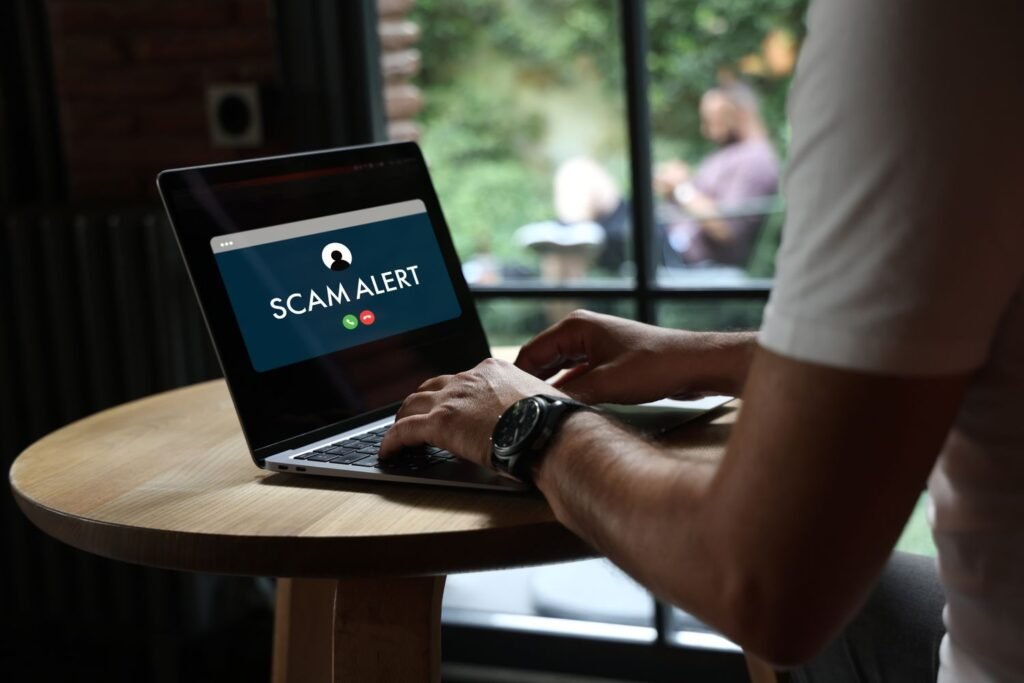:max_bytes(150000):strip_icc():format(jpeg)/GettyImages-1800335188-2145cb33db45400b9f0c8fbb93ed5c92.jpg)
That seemingly innocuous unsubscribe button at the bottom of your spam emails might not be as harmless as it seems. According to a new report in The Wall Street Journal, one in every 644 clicks on these links can lead you to a malicious site.
Experts say clicking “unsubscribe” on suspicious messages could do the exact opposite of what you intend by flagging your email as active for scammers and inviting a wave of new phishing attacks.
Key Takeaways
- Clicking unsubscribe on phishing emails can confirm your address for scammers and lead to more targeted attacks.
- Legitimate unsubscribe links often use HTTPS and have recognizable sender info; phishing emails don’t.
- The safest way to stop spam? Mark emails as junk and avoid clicking links in emails you weren’t expecting.
The Dark Side of Unsubscribe: How Scammers Exploit Your Clicks
Clicking links in a phishing email can actually confirm your email address for potential identity thieves, warns Eva Velasquez, CEO of the Identity Theft Resource Center. In other words, that unsubscribe link might not remove you from a list. It could actually signal to scammers that someone is actively checking this inbox.
Scammers can then flood you with phishing attempts, linking to fake websites that ask for additional personal information, or even embed malware in the link itself.
In some cases, clicking could redirect you to fake websites asking for personal information, exposing you to further identity theft risks—a tactic known as social engineering, Velasquez notes.
Spotting Legitimate vs. Dangerous Unsubscribe Links
So, how do you avoid falling victim to these types of links? When you hover over a link or the link is spelled out, look for red flags that should make you think twice before clicking. “If there are grammatical errors or inconsistencies, it is likely a bogus email with a malicious unsubscribe link,” says Velasquez.
She also advises looking for URLs that lack “HTTPS”—a standard security protocol—and checking the sender’s email address for suspicious formatting.
“Always be cautious,” Velasquez says, noting that unsolicited emails and emails that pressure you to act immediately should immediately raise alarms. More importantly, she says, never click on links in emails you receive that you are not expecting. Instead, navigate directly to the supposed source to verify the legitimacy of the message when you can.
For example, if you receive an email claiming to be from your bank or a retailer, don’t click any links in the message; go to the official website yourself and log in to your account to verify any alerts. If you’re still unsure, call the number posted on the official website to ask about the suspicious email.
Safe Ways to Stop Unwanted Emails Without the Risk
If you want to rid your inbox of spam without unintentionally clicking a malicious link, you’ve got some options. “Ignoring unwanted emails and not clicking on links in those messages is the best course of action,” Velasquez says.
She recommends using built-in tools to report spam and block senders through your email provider. Gmail, Outlook, and most other major email providers have filtering options that can help clean up your inbox without compromising your safety.
And if you’re truly unsure? “It is safer to report an email as spam manually than to click on any link to unsubscribe,” she adds. This not only protects you but also helps your system learn to automatically block similar messages in the future.
The Bottom Line
That unsubscribe link might promise peace, but it could bring chaos. Clicking it on a suspicious email can alert scammers that your inbox is active, putting you on the radar for more dangerous phishing schemes. Instead of interacting with the email, use built-in spam filters and blocking tools to cut down on junk.
As Velasquez says, “You can’t become the victim of a phishing attack if you don’t click on any links, open attachments, or respond to the emails.” If you do fall victim to identity theft, there are resources, such as the Identity Theft Resource Center, that can help you out for free.

